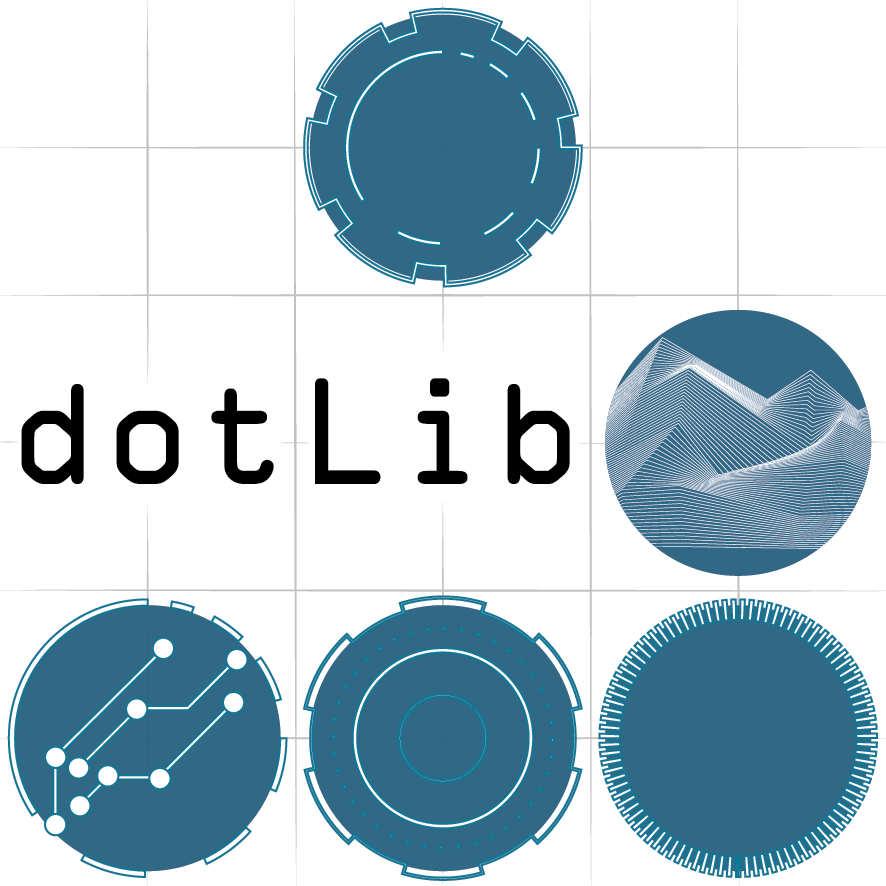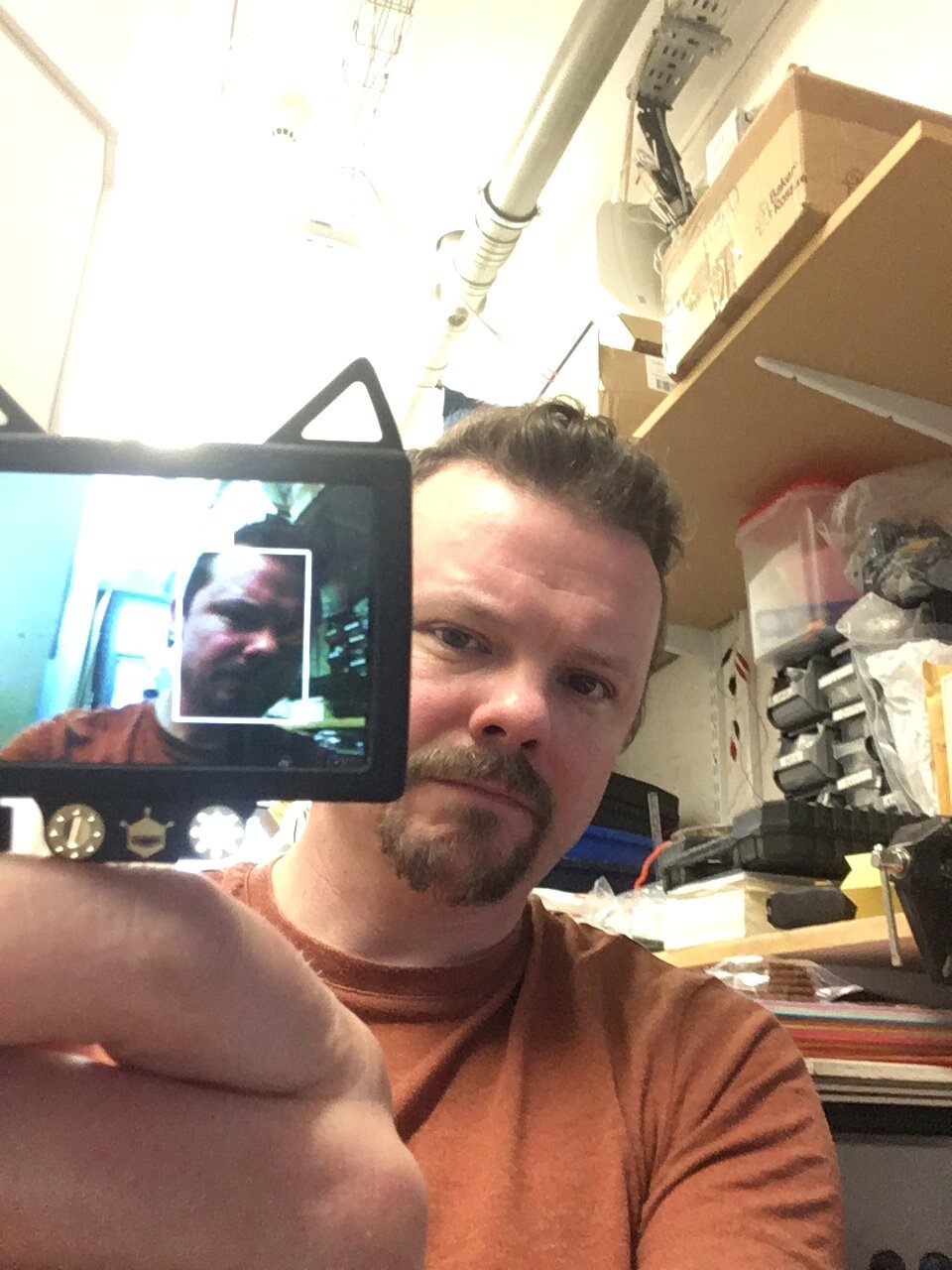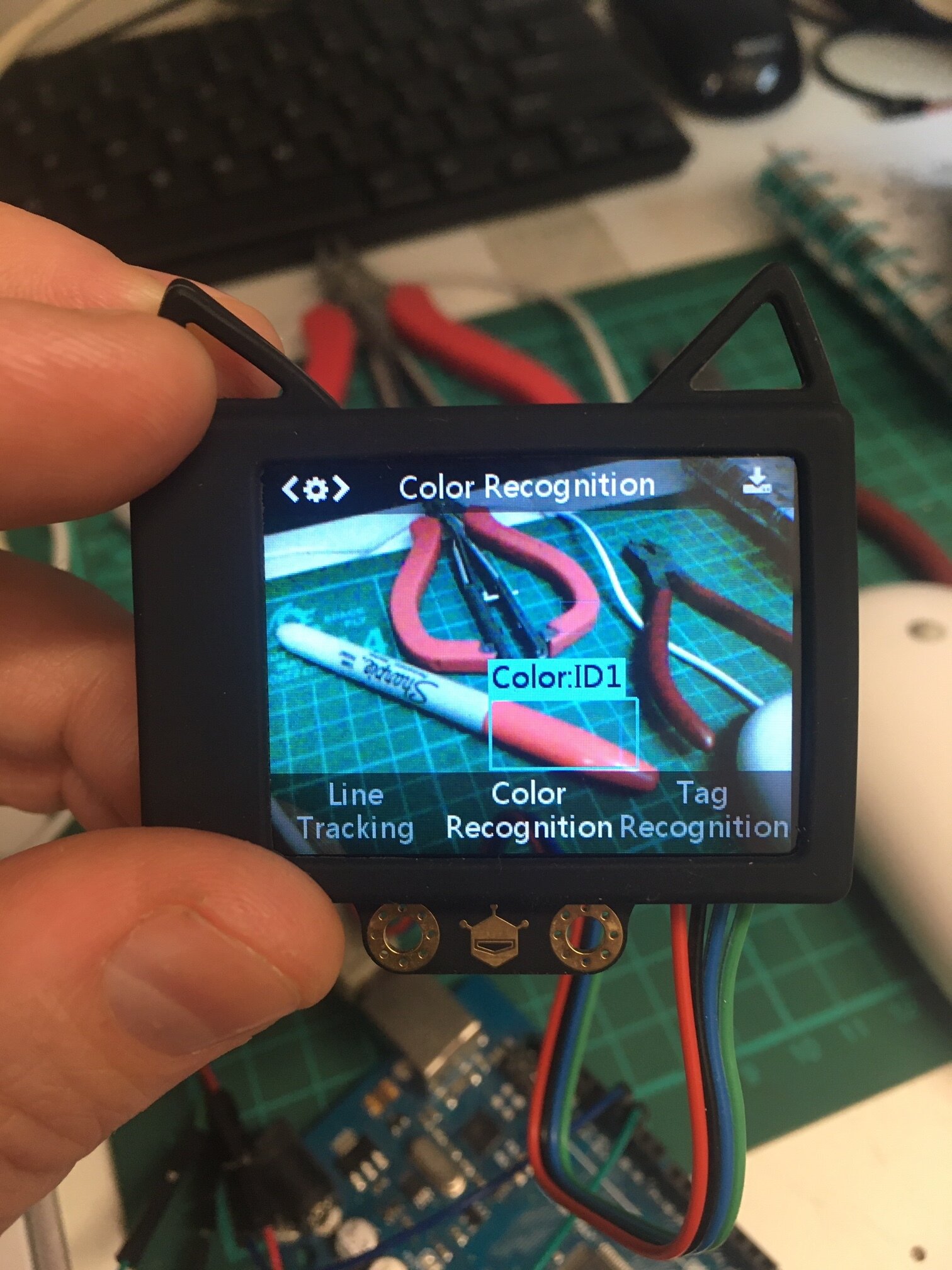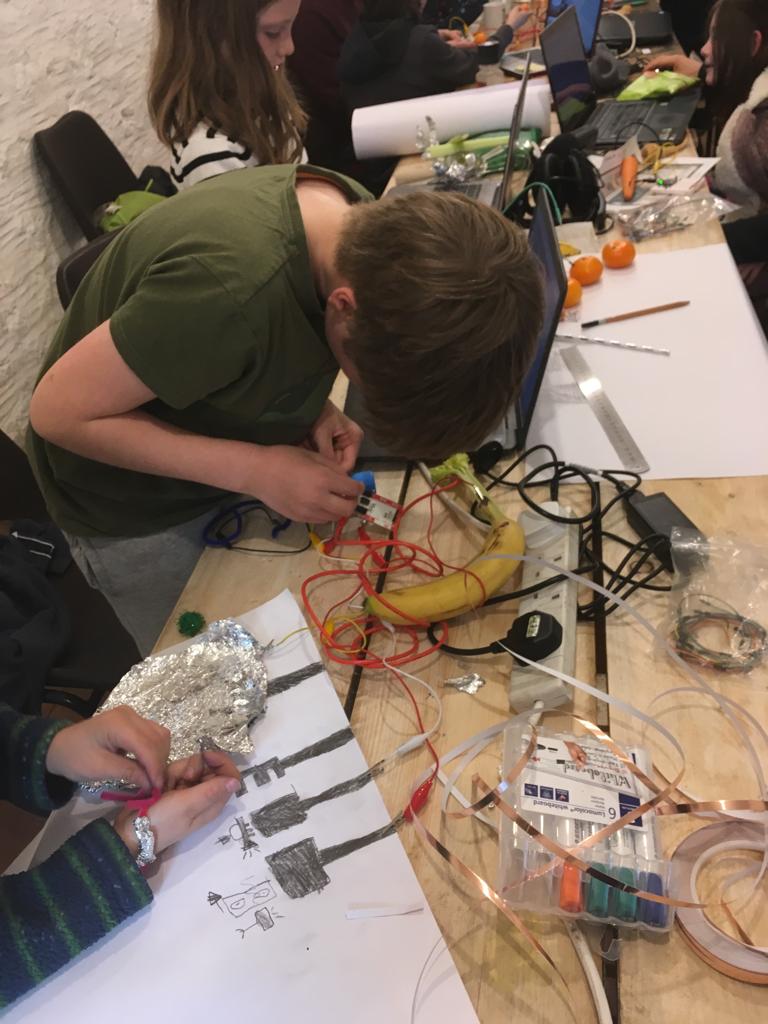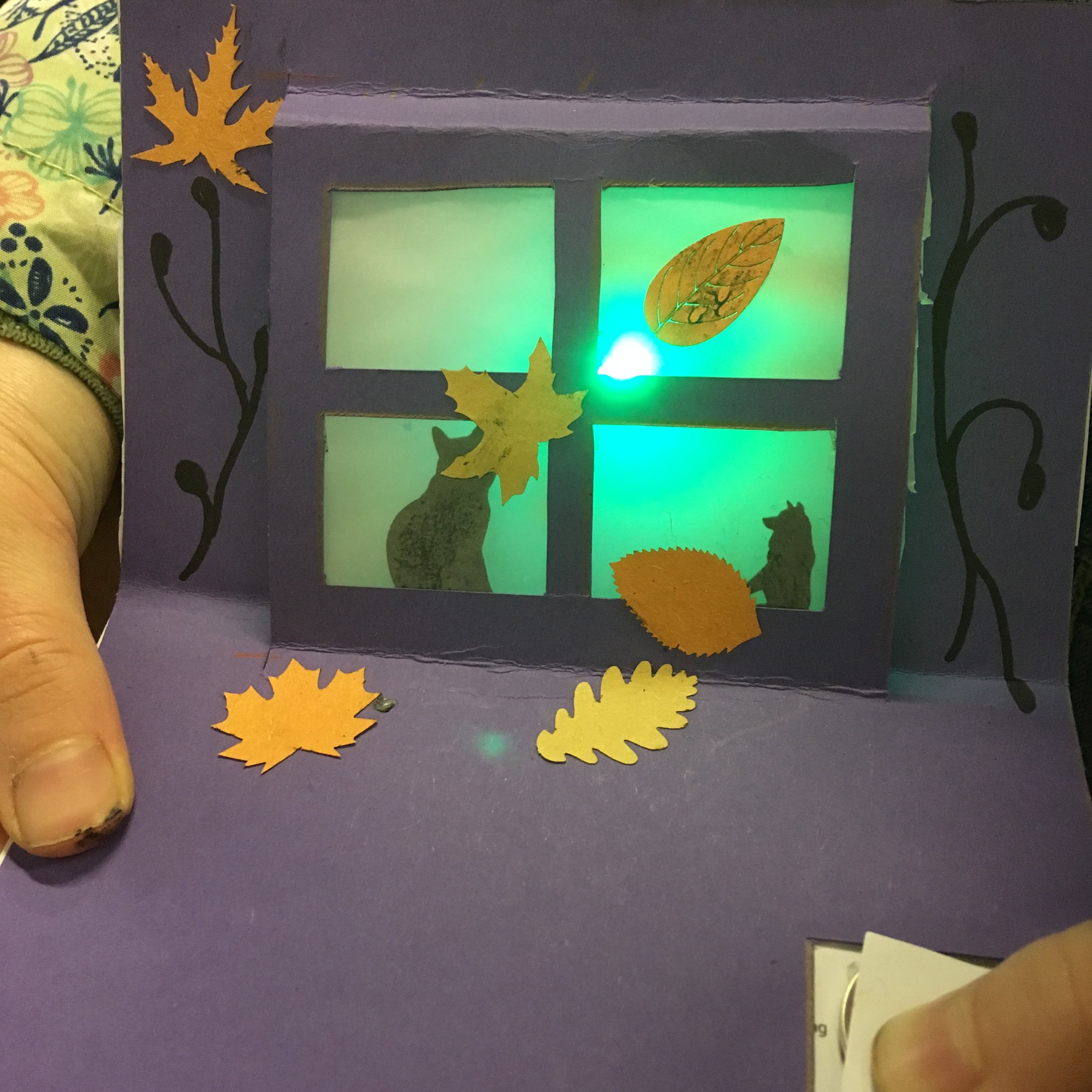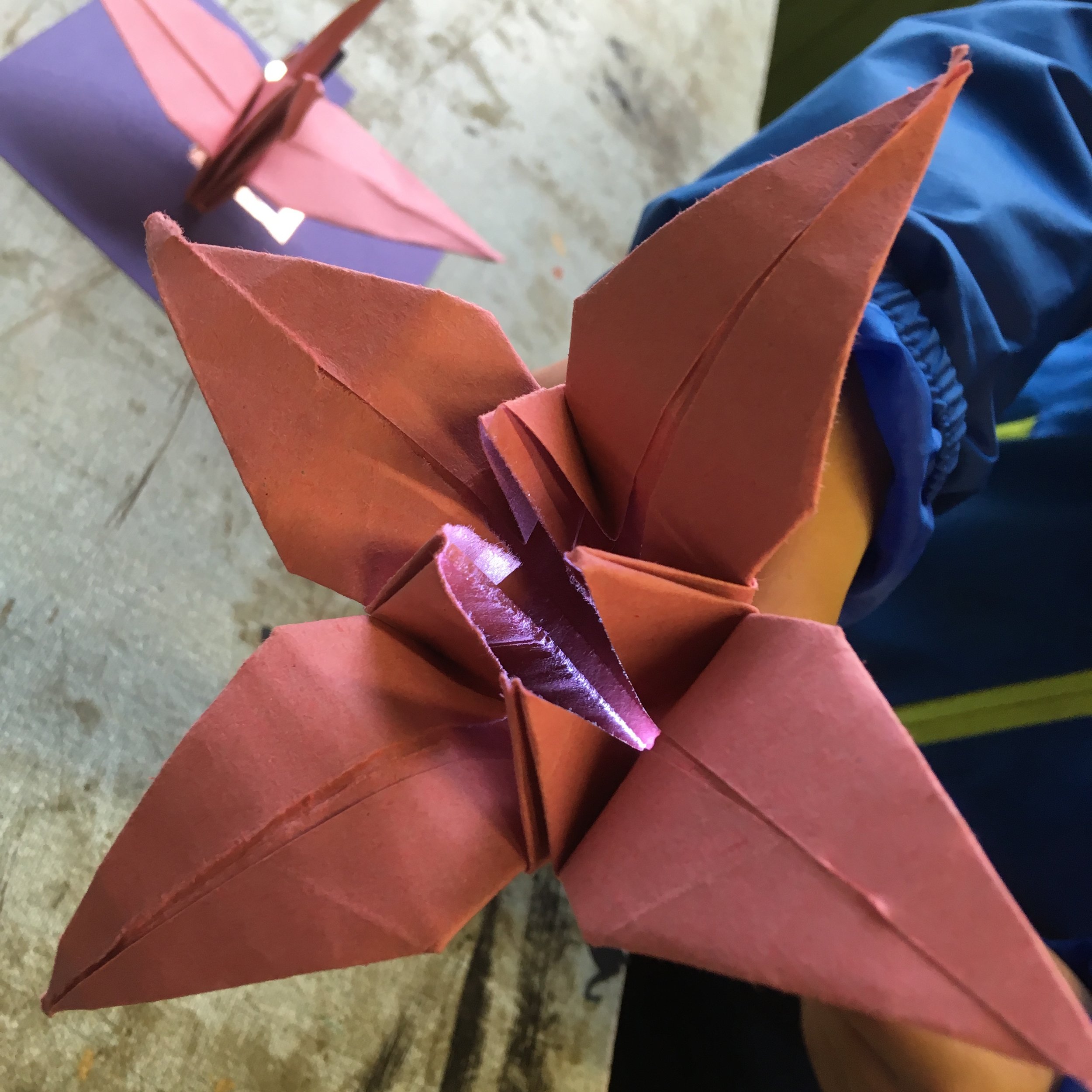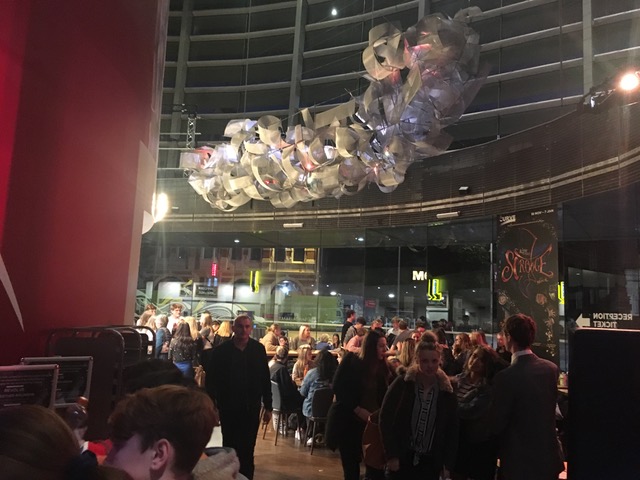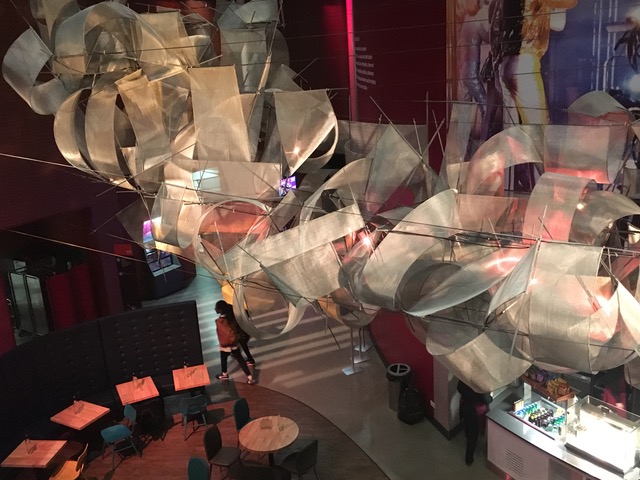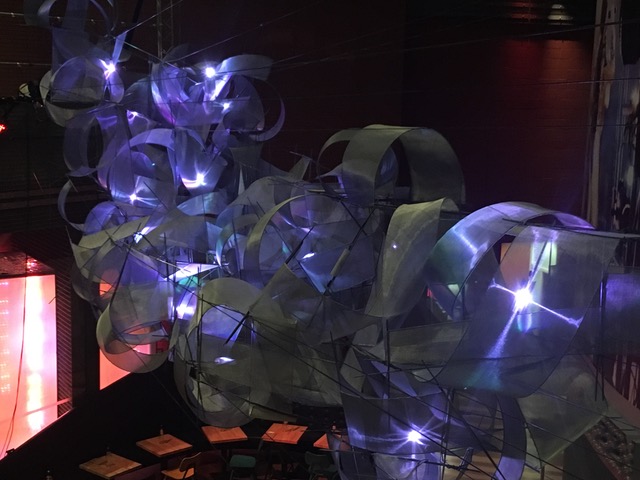I found this cool Instructable for making LED jewellery out of brass rod and wanted to make something for my son’s birthday, he likes foxes! I found the LEDs were just too bright without any resistors so I managed to incorporate some tiny 0204s into the design. It seems strong enough, but time will tell, and I think if I had put the battery in the other way it would have not shorted if you pushed it in too much, but I am not re-soldering those LEDs the other way now!! It’s super fiddly, but using a bit of solder paste helped to get things in position and the solder to stick. I need to get a badge back on there somehow too…
Nerf gun turret
I was working on a Nerf gun turret in my previous employment at a special needs school but never had time to finish it. There are a lot of very disabled children who don’t get to run around and wrestle like other kids do so I was trying to think of a way of them getting in on the ‘boisterous play’. The Nerf gun turret was meant to be something they could use with a small thumb joystick similar to one used to drive an electric wheelchair, or even controlled with eye gaze tracking. For this iteration I just hooked it up to a USB gamer joystick.
There are definitely some improvements to be made, the rig is flimsy, the tilt servo could do with some gearing, the gun often jams and I may have smoothed the input a little too much, but we are getting there! I’d love to hook it up to the Husky Lens and get some AI image tracking going on… face recognition to only attack a certain person?
Huskylens Easy-to-use AI Vision Sensor
I just received my DFRobot Huskylens having funded the Kickstarter a while back. Of course there is zero documentation at the moment, I couldn’t find anything much online and was having trouble reading serial from the device. In the end I searched on Github and found an Arduino library. If you download the zip, unzip it and then rezip the ‘HUSKYLENS’ folder inside the main folder then you can import it as a zip library as described here and then access the examples.
I had a quick play with the device and managed to get location data coming in to my Arduino for tracked objects and it seems pretty simple to learn new ones. Now if I can hook up some face detection to the nerf gun turret I am building we can have some fun…
SpotiPi
I’ve been getting friendly with the Raspberry Pi Zero for audio applications and I discovered some great new boards just before Christmas by Pimoroni that include a DAC, a screen and some buttons. My son loves his music but is at that age that if you give him a device to play Spotify on he will just fiddle with the device so I wanted to give him a Spotify player without the distractions and something he can have a little party with his friends. I came up with this little boom box in gold and black that displays the album art and gives you volume control, play, pause and skip buttons, is USB rechargeable has great sound quality, is pretty loud and has a long battery life. I can select a playlist on my phone and then he can take it away. Also clear front panel so he can check out all the circuitry and room for adding some more buttons and faders!
Sound Fragments
I have been working on some Raspberry Pi powered speakers for a while now. These devices owe a lot to the interactive bird sculptures that I made for Forest of Imagination in 2018. The devices have a decent speaker and amplifier, battery, are USB chargeable with exposed volume controls and can communicate with one another. Right now I am running PD on them to generate sounds and hope to add functionality for other inputs and outputs such as sensors, microphone and LEDs. The idea really was to be able to create a network of smart devices capable of producing decent quality sound for sonic art installations.
Eventually I hope to make this project open source and share the code, designs and bill of materials on line.
STEM / STEAM workshops
I recently did some STEAM (Science Technology Engineering Art Maths) workshops at Edventure in Frome. We explored paper circuits, programming in Scratch and making interfaces using the Makey Makey. I had lots of fun and the feedback was great, there were some impressive creations!
Miniature World Illuminations - Installation Prototype
I have been designing an install for the Bath based Forest of Imagination event in the summer of 2019, I built this prototype to test out some of my ideas and it was great fun. I can’t wait to build some more of these!
Custom Lasercut Cases for Power LED Modules
It was about time to make a nice case for my custom LED modules!





Smart Film
Well, the Shutter Glass was super cool, but I can’t seem to find it in big pieces and you need to use power to hold it dark . Smart Film is frosted and then you apply power to clear it which is more what I am after, again, cool stuff!
Shutter Glass
Been playing with some shutter glass for an upcoming project, really cool stuff!
Feather Huzzah32 - ESP32 OSC
I was a fan of the old Huzzah board based on the ESP8266 chip, but it only had one analog input which made it unsuitable for some projects. The new ESP32 chip has loads of analog inputs, bluetooth/BLE and is pretty packed with GPIO and features! Check it out here at Adafruit.
I have been using it to send button and fader/sensor readings over WiFi using OSC to my computer running Max MSP, it is a great tool. I have created a repository here with all the coding and information to set it up.
Esther Rolinson 'Revolve' installation at Curve Theatre, Leicester
So, this is the installation for which I have been working so hard on the modular power LED string. See those glowing internal lights?
Beautiful work, just sad I didn't get to see the finished piece in person.
Modular Power LED string
Finally there, 28x 3W LEDs in a modular design with around 70 metres of cable. Off to deliver to Esther Rolinson for her installation at The Curve Theatre in Leicester.
Hello world!
It lives! 15 more to make.
Modular Power LED strip
One down, 24 to go...
Cables!!
Well that's the cabling done... and I now have no feeling in my fingers.
Adafruit Pixie Power LEDs
Currently working with these very bright 3W LED modules, have been designing a large string of them for an installation. More to follow...
LED fidget spinner
It was my recently my son's birthday and although fidget spinner madness is starting to wane now I thought it was worth trying to cram some electronics into one. I found an Instructable that I took as inspiration and put my own spin (!!) on it. I wanted it to be see through as my son likes to see the workings of things (he would have just taken it apart otherwise!), which caused some issues when trying to grind things out as it tended to melt. Anyway I managed to get some really cool tiny switches from Rapid (2.5mm thick!) and ended up with this.
Wifi RFID sender
I have been putting together an RFID reader that can send tag IDs over Wifi to a machine running Max MSP on the same network. I have used an RC522 reader which I have blogged about before, and the recent Adafruit Feather Huzzah board which is based on the ESP8266 chip and includes an onboard Lipo charger so is great for portable IoT projects. For once I managed to find an enclosure of pretty much exactly the right dimensions, it was tight but I crammed it in including switch and indicator LED. The hardware will be used for a project at Three Ways School that aims to give non/pre verbal children a voice, more details to follow...
Arduino / Xbee network
I will be running some workshops on the Creative Computing course at Bath Spa in January with kit supplied by Farnell Element14. I want the students to create a network of nodes that communicate with each other and have some element of generative algorithm to them. I have built a proof of concept as seen in the video, a single node generates an audio and LED output and sends the message to another node, that node displays the incoming message and then generates one of its own to signal another unit. Right now everything is generated pretty randomly and the nodes choose another one to send their message to at random. Things will get more interesting when we link colour and audio frequency and think of more interesting ways to generate our message. Perhaps some nodes will favour talking to others or malcontents will start interrupting the current conversation? I am interested to see what behaviour might emerge when there are 10 of these things going and each has its own 'personality'...
